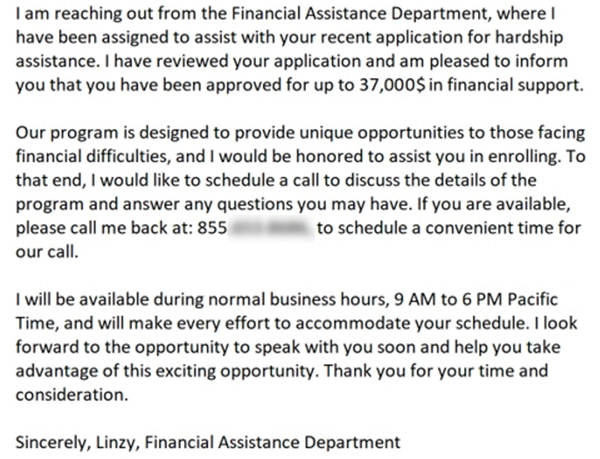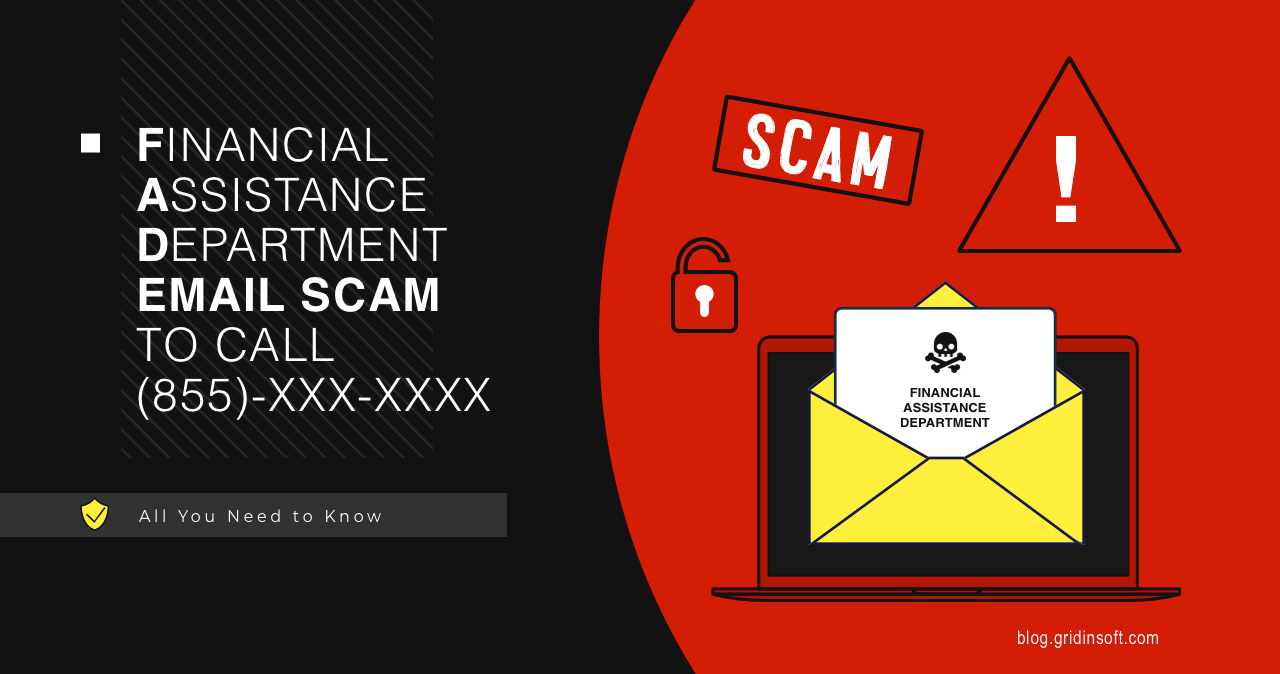Email is one of the oldest ways to exchange information over the Internet. So, email scams are the most common type of scam that originated, as it is believed, back in 1995. However, Financial assistance department scam is a relatively new type of scam that has recently emerged. In this article, we will look at DFA fraud and how it works and provide some tips on how not to fall victim to this type of fraud.
How it works
The Financial assistance department scam usually begins with an email, apparently directed at people in financial difficulty. The email claims to be from the Department of Financial Aid and offers financial assistance or grants. This scam can sometimes take many forms, such as fake tech support, phishing, investment, and government funding scams. In addition, the email may contain official-sounding language. It may even include a reference number or other seemingly legitimate information.
The email prompts the victim to call the phone number to complete the application process. However, the phone number listed is controlled by scammers and often starts with 855 or 833. If you receive an email or call from someone claiming to represent the Department of Financial Aid asking you to contact a different number, be careful and research the issue before taking action. If a victim calls the number, scammers ask for personal and financial information such as social security numbers, bank account information, and credit card information. This is done for identity theft, fraud, or other illegal activities.

Signs that it’s a scam.
These emails are easy to distinguish because they often contain red flags that give away their fraudulent origin:
- The email is sent from an address that does not match the name of the financial aid department.
- The organization’s email address is a P.O. box, such as Gmail or outlook.
The email represents a specific organization but does not provide any information about the organization. - The email uses a sense of urgency and encourages the victim to respond quickly.
- The email was sent without the recipient’s consent or request.
- The email offers the recipient pre-approved financial support.
- The email contains grammatical errors.
Genuine financial and government agencies never ask for personal information by phone or email, especially without confirming the identity of the person they are communicating with.
What to do if you receive a fraudulent email
If you’re reading this article, you’ve probably already received a scam email from the Financial Aid Department. In that case, you should do the following:
- Do not click links or attachments that the email contains. Doing so may harm your device.
- Do not reply or call back the phone number listed in the email.
Do not share any personal information with anyone who contacts you unexpectedly. - Check the information directly with the appropriate organization. You can find their contact information on their official website.
- Mark the email as spam. It will help prevent similar emails from appearing in your inbox.
- Report email scams to the appropriate authorities, such as the Federal Trade Commission (FTC) at https://www.ftc.gov/ or the Internet Crime Complaint Center (IC3).
If you’ve already responded to a fraudulent email or provided personal information to fraudsters, please contact your bank or credit card company immediately, report suspicious activity, and protect your accounts. You may also consider a credit freeze on your accounts to prevent unauthorized access.
The information described above will help you avoid phishing scams such as the fraudulent “Financial Aid Department” email. But remember, scammers continuously develop new tactics, so you must remain vigilant and secure your personal information.




